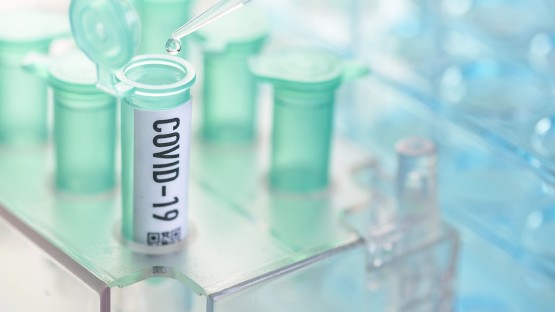A group testing approach proposed by a Cornell researcher, in which samples of COVID-19 tests are pooled and analyzed collectively, could potentially curtail the virus’s spread through weekly testing of every household in the U.S., a simulation showed.
Assuming that 1% of Americans have the virus, the simulation found that weekly group testing could allow more than 90% of the country to safely return to daily life after a four-week period, said Peter Frazier, associate professor in the School of Operations Research and Information Engineering.
The plan would require 6 million tests a week – far more than are currently conducted – but a feasible goal, said Frazier, who described the research in a recent white paper, “Feasibility of COVID-19 Screening for the U.S. Population With Group Testing.”
“If we had the ability to provide tests to a large fraction of the population on a regular basis, that would allow us to find people who are infectious but don’t know it, and then take action so that those people don’t infect other people,” Frazier said. “And one of our big challenges is that we don’t have the testing capacity to meet that need.”
One of the major limiting factors in testing is the polymerase chain reaction (PCR) test, a time-consuming laboratory technique requiring specialized machinery. With group testing, dozens of individual saliva or nasal swab samples are pooled and tested together.
To identify positive cases, the samples are arranged in a square array, with pools constructed from each row and column. If the pool is negative, everyone in it can be considered uninfected; positive cases can be narrowed down by pinpointing where positive rows and columns intersect.
Group testing is not a new concept – it was effectively used during World War II to detect syphilis in the armed forces.
“From a statistical point of view and a medical point of view, this kind of thing is totally doable,” Frazier said. “We’re in a much better place than we were in the 1940s, because we have robots. Keeping track of hundreds of thousands of samples is a good job for a robot.”
Frazier is collaborating with researchers in the College of Veterinary Medicine to develop robots capable of sorting samples.
Downsides to the group testing approach include false positives and false negatives. Combining all swabs from a household into a single sample, however, could reduce the number of tests needed and help combat false negatives, since most cases of COVID-19 tend to spread among members of a household.
Repeated testing would also reduce the chances of errant results.
Another potential problem is dilution. The virus may be found in different concentrations in different positive samples; if the samples are pooled, that could further dilute the virus and cause it to go undetected, increasing the error rate.
In the researchers’ simulation, they presumed that households would be tested once a week for four weeks. The household tests were pooled in sizes ranging from 41 samples to 62 samples. Assuming a 30% false negative rate from improper swabbing and a 10% false positive rate, the simulation found that by the end of four weeks the virus prevalence would drop from 1% to 0.3% of the population.
“There’s a tradeoff – if you don’t have enough capacity to be able to test everyone with individual tests, then you can either test fewer people at less frequency with more accuracy, or you can sacrifice a little in terms of accuracy to test a large number of people at a greater frequency,” Frazier said. “And while it is going to depend on exactly how the error rate scales, I do think that for most parts of the country, we’d be much safer if we went with this group testing procedure.”
The white paper was co-authored by doctoral students Massey Cashore and Yujia Zhang ’19.















